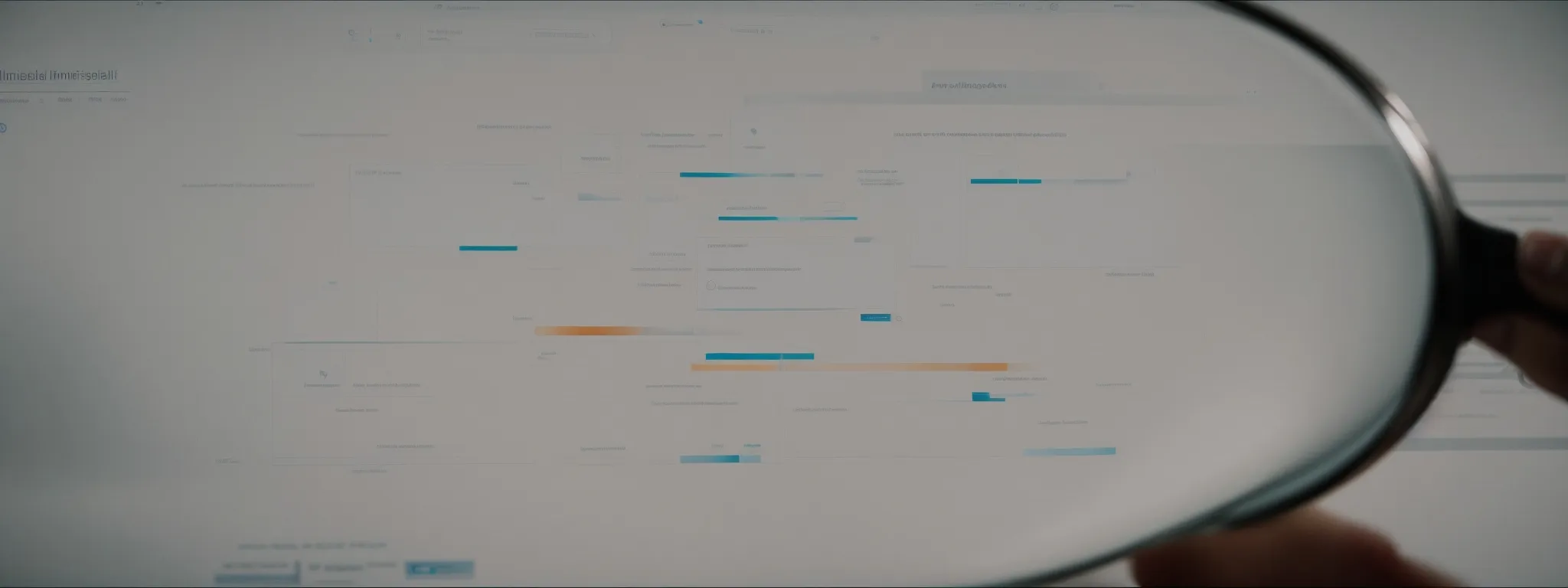Diagnosing Technical SEO Problems Guide
Step-by-Step Guide to Diagnosing Technical SEO Problems Navigating the intricacies of technical SEO requires a blend of expertise and systematic assessment. To begin diagnosing and resolving SEO […]
Step-by-Step Guide to Diagnosing Technical SEO Problems
Navigating the intricacies of technical SEO requires a blend of expertise and systematic assessment.
To begin diagnosing and resolving SEO issues, one must first grasp the complex relationship between site architecture, user experience, and search engine algorithms.
LinkGraph’s cutting-edge SEO services and Search Atlas SEO tool are strategically designed to guide users through each step, offering actionable insights for SEO specialists, marketers, and web developers alike.
It is essential to conduct a meticulous analysis, evaluating everything from url structure and page content to site performance and crawlability.
Keep reading to unlock the full potential of your website’s search engine performance through a detailed guide to technical SEO troubleshooting.
Key Takeaways
- Technical SEO Is the Foundation for Search Engines to Efficiently Crawl, Index, and Render Web Pages
- LinkGraph’s Search Atlas SEO Tool Provides Comprehensive Site Audits That Identify and Resolve Technical SEO Issues
- Mobile Responsiveness and Optimization for Diverse Devices Are Crucial for Maintaining Search Engine Visibility and User Engagement
- Page Speed Optimization Is Essential for User Experience and Impacts Search Engine Rankings, Navigated by Tools LinkGraph Employs
- Structured Data and HTTPS Implementation Are Advanced Technical SEO Tactics LinkGraph Uses to Enhance Search Presence and Site Security
Starting Your Technical SEO Diagnosis Journey

Embarking on the path to stellar search engine performance invariably requires a comprehensive evaluation of a website’s technical SEO health.
A meticulous approach to diagnosing potential SEO issues is not only recommended, it’s imperative for success in the digital marketing arena.
As the foundation of a strong SEO strategy, technical SEO lays the groundwork for search engines to efficiently crawl, index, and render web pages.
Before delving into complex site architecture or embarking on ambitious link-building campaigns, it is wise for businesses to master the core principles of technical SEO, equip themselves with the necessary analytical tools, and become adept at quickly recognizing the hallmarks of common SEO ailments.
This quest is essential for professionals seeking to enhance online visibility and strengthen their internet foothold, and with LinkGraph’s cutting-edge SEO services and Search Atlas SEO tool at their disposal, they are poised to do just that.
Understand the Core Principles of Technical SEO
Grasping the intricacies of technical SEO begins with a clear comprehension of its role in bolstering a website’s interface with search engines. Fundamental components such as site structure, URL structure, and the proper deployment of a robots.txt file serve as the cornerstones for ensuring search bot accessibility and optimal indexing.
By leveraging these elements, coupled with a robust understanding of XML sitemaps and hreflang attributes, a client positions their digital assets to capture the crawlers’ attention, thereby influencing search rankings favorably. LinkGraph’s SEO services underscore the importance of these SEO elements, applying their expertise to enhance site performance and visibility.
Set Up the Right Tools for Effective Diagnosis
Effective diagnosis begins with the strategic selection of advanced tools tailored for revealing technical SEO issues that could hinder search engine rankings. LinkGraph’s Search Atlas SEO tool exemplifies precision and innovation, providing comprehensive site audit reports that delve into the granular aspects of SEO health, from page speed to crawl errors.
With the aid of tools such as LinkGraph’s Robust Site Audit Tool, experts can streamline the investigative process, pinpointing issues such as redirect chains, crawl budget depletion or broken links with remarkable accuracy. These insights empower SEO specialists and web developers to rectify SEO problems efficiently, paving the way for enhanced search engine visibility and user experience.
Identify Common Technical SEO Issues to Watch For
An essential step in fortifying a site’s search engine optimization is identifying frequent technical SEO issues that can disrupt user experience and impede search ranking progression. SEO experts must vigilantly monitor for signs of trouble, such as slow page load times—a critical speed factor—that can escalate bounce rates, and suboptimal mobile optimization which may alienate a growing cohort of users accustomed to browsing on various devices.
Diligence in detecting and rectifying orphan pages that exist without internal links can prevent missed opportunities for client engagement, while incorrect or missing status codes can lead to unresolved user inquiries and diminished trust from search bots. Moreover, LinkGraph Provides Insights into these and other technical SEO elements, assisting in unveiling the nuanced complexities of site performance issues.
Conducting a Comprehensive Website Audit

Uncovering technical SEO pitfalls requires a methodical approach, starting with a comprehensive website audit—a process analogous to a meticulous examination by a medical professional.
Such an audit should employ sophisticated crawlers capable of simulating the scrutiny of a search engine bot, to navigate and assess every nook and cranny of a site’s architecture.
With the groundwork laid by a thorough crawl, the subsequent analysis hinges on interpreting the crawl report with a discerning eye.
Detailing anomalies and errors is paramount to forming an actionable plan to mend the digital framework and propel SEO performance to its zenith.
This initial foray into audit territory sets the stage for a rigorous journey towards search engine optimization refinement.
Choose the Right Crawler to Simulate Search Engine Bots
Selecting an adept crawler to mimic the meticulous examination strategies of search engine bots is critical in identifying technical SEO deficits. The crawler must be capable of comprehensive coverage, seamlessly navigating through complex site architecture and various page content, keeping track of every interaction to ensure no SEO element evades scrutiny.
A precise and versatile crawler not only scrutinizes a website’s public content but also delves deep into areas often overlooked, such as login pages and xml sitemaps. By accurately reflecting the behaviors and preferences of search engines like Googlebot, LinkGraph’s Expert Tools lay bare the subtleties of a site’s technical foundation:
| Crawl Component | Importance | LinkGraph’s Tool Capabilities |
|---|---|---|
| Site Structure | Essential for search bot navigation | Assesses organization and hierarchy |
| URL Structure | Impacts crawlability and user experience | Analyzes clarity and consistency |
| Robots.txt file | Directs crawler access to desired pages | Ensures proper implementation and efficacy |
Begin With a Crawl of the Entire Website Structure
The initial phase of a technical SEO audit involves subjecting the website to a comprehensive crawl, an essential step designed to systematically navigate and evaluate the entirety of a website’s structure. This initial crawl is critical, as it maps out the website’s architecture, allowing for an in-depth examination of how well a site’s pages interlink, and identifies any technical barriers that could prevent effective indexing by search engines.
Conducting this broad sweep of the website enables the SEO specialist to establish a baseline of the site’s current SEO health. Critical issues such as broken links, improper redirects, and inconsistent URL structures come to light during this process:
- Analyzing the interconnectedness of pages to assess navigational flow.
- Spotting broken links that lead to poor user experience and hinder search bots.
- Evaluating URL structures for consistency and logic to aid crawlability.
After the completion of the crawl, the data amassed sets the stage for identifying specific issues that will need to be addressed to improve the site’s SEO performance. This in-depth analysis serves as the catalyst for developing targeted strategies to tackle each identified SEO problem effectively.
Analyze the Crawl Report for Anomalies and Errors
Upon completion of a thorough website crawl, the expert attention turns to a detailed examination of the ensuing report. This document, dense with vital data, reveals inconsistencies and anomalies that might elude even the most vigilant eye during routine observations.
The success of this analytical phase hinges on the capacity to interpret and prioritize the errors highlighted by the crawl. Technical SEO auditors at LinkGraph meticulously sift through a slew of status codes, inspect URL structures, and scrutinize page content for discrepancies that could impair a website’s search engine affinity.
Delving Into Indexation Issues

Ensuing the comprehensive crawl of a website, it is pivotal to address indexation, a cornerstone of technical search engine optimization that influences a site’s visibility within search engine results pages (SERPs).
Indexation problems can significantly impede a site’s ability to rank, thereby necessitating an expert review of how search engines are cataloging the site’s pages.
Central to this examination is the use of search console tools which provide crucial insights into a site’s current index status.
Additionally, keen analysis of robots.txt and meta tags is essential in identifying potential blockages that preclude search bot access, while a thorough review of internal linking practices and sitemap inconsistencies is instrumental in ensuring seamless navigation for both users and search engine crawlers.
Each step is critical, requiring a meticulous and prudent evaluation to uncover and resolve any barriers to a search engine’s ability to recognize and list a website’s content.
Verify the Site’s Index Status With Search Console Tools
The examination of a website’s index status begins with the deployment of Search Console tools, which serve as a pivotal resource for uncovering discrepancies in a site’s visibility on search engine results pages. LinkGraph harnesses these tools to provide clients with real-time insights into which pages are indexed and to detect any issues hindering indexation.
Utilizing URL inspection tools within Search Console, technical SEO auditors swiftly ascertain the index status of individual web pages, facilitating prompt identification and correction of indexation problems. LinkGraph’s meticulous use of these diagnostic resources ensures that every page content is visible and primed to deliver the maximum SEO impact.
Scrutinize robots.txt and Meta Tags for Blockages
Investigating robots.txt and meta tags is an indispensable step in revealing whether there are barriers that might be preventing search engine bots from accessing and indexing website content. A properly configured robots.txt file guides search bots through the site, dictating which areas to scan and which to bypass, while meta tags give specific instructions about how individual pages should be handled.
Errors or misconfigurations in either can lead to significant indexation issues: for instance, an incorrect directive in the robots.txt file can accidentally block crucial pages, and meta tags like “noindex” can prevent pages from appearing in search results when not used appropriately.
- Evaluate the robots.txt file for directives that unintentionally block crawler access.
- Inspect meta tags on each page to ensure they align with indexing objectives.
- Correct any errors found to restore full search engine visibility for all intended content.
Examine Internal Linking and Sitemap for Inconsistencies
Scrutiny of internal linking and sitemap configuration plays a pivotal role in ensuring a transparent path for search bots and visitors alike. Anomalies or inconsistencies in these areas can cause navigate mismatch, leading to a fractured user journey and diminished search engine comprehension of site hierarchy and importance of content.
LinkGraph’s Meticulous Approach involves a detailed examination of the connective tissue that binds the site together, ensuring that internal links foster a cohesive, easily navigable structure. Concurrently, they verify the sitemap’s accuracy, confirming its reflection of the site’s latest structure, which is instrumental for maintaining a seamless indexation process.
Speed Optimization and Performance Assessment

For any website striving to climb the search engine ranks, a swift and seamless user experience is non-negotiable.
Enter the realm of speed optimization, where milliseconds can mean the difference between retaining an engaged visitor and suffering increased bounce rates.
Professionals tasked with elevating site performance must turn their keen eyes to webpage load times, the Achilles’ heel of digital satisfaction.
Armed with sophisticated speed testing tools, these experts meticulously dissect each web page, chasing the epitome of digital efficiency.
They engage in tactical maneuvers to sideline render-blocking resources, and they strategically weave compression and caching methodologies into the very fabric of websites.
This commitment to rapid content delivery is not just an exercise in technical prowess but a dedicated pursuit to bolster a site’s standing in the competitive landscape of search engine results pages.
Employ Speed Testing Tools for Webpage Load Times
Proficiency in the utilization of speed testing tools stands as a linchpin in addressing site performance concerns. Experts deploy these solutions to gauge the responsiveness of web pages, setting a benchmark against which all speed-optimizing efforts can be measured.
LinkGraph’s commitment to excellence in SEO services recognizes the foundational impact of page speed on search engine rankings. Adapting to the dynamic demands of page load performance, LinkGraph Leverages Analytical Tools to ensure clients’ websites operate at peak efficiency:
| Aspect of Speed Optimization | Tool’s Function | Outcome |
|---|---|---|
| Page Load Time Assessment | Measuring the time taken for content to fully display | Identification of elements causing delays |
| Resource Loading Sequence | Evaluating the order in which page elements load | Optimization of rendering pathways |
| Server Response Times | Analyzing backend contribution to loading speed | Enhancements to server configuration for speed gains |
Identify and Rectify Render-Blocking Resources
In the pursuit of optimizing page speed, it’s crucial to target and neutralize render-blocking resources that obstruct the swift display of content. Render-blocking resources, such as certain JavaScript and CSS files, delay the page rendering process, leading to unnecessary waits for users. LinkGraph’s methodical SEO services include identification and optimization of these critical resources, ensuring they are either deferred or asynchronously loaded to improve page load times and enhance user experiences.
LinkGraph’s Expertise extends to pinpointing and resolving render-blocking issues that impede a website’s responsiveness and fluidity. Their approach involves dissecting the sequential loading of page elements to identify where bottlenecks occur and applying advanced techniques to streamline the critical rendering path. This attention to detail enables LinkGraph to refine a site’s interactive readiness, delivering content to users with efficiency that meets today’s standards for digital excellence.
Implement Compression and Caching Strategies
Delving into the technical sphere of SEO, LinkGraph champions the implementation of compression techniques, which are vital for minimizing load times and enhancing user experience. By streamlining data with gzip or Brotli compression, the sheer size of web page resources is reduced, leading to markedly swift and efficient content delivery to users across a multitude of devices and screen sizes.
In addition, caching strategies are leveraged to further reinforce site performance, with LinkGraph orchestrating the storage of frequently accessed page resources on local servers or within browsers. This proactive approach ensures that subsequent visits to a page unleash unparalleled speed, catapulting the user’s experience to new heights of responsiveness and solidifying the website’s position in search engine rankings.
Ensuring Mobile Friendliness and Responsive Design

In today’s digital landscape, where mobile usage eclipses desktop browsing, a website’s adaptability to various devices stands as a crucial factor in its SEO health and overall success.
Recognizing this shift in user behavior, SEO experts prioritize the mobile friendliness of a site, understanding that responsiveness is a significant ranking signal for search engines.
LinkGraph insists on a thorough evaluation of websites across an array of mobile devices, swiftly addressing usability concerns on smaller screens to ensure seamless interaction.
By tailoring site layout and design, they aim to deliver an optimal mobile user experience, crucial to maintaining high search engine visibility and user engagement.
This subsection unfolds the processes involved in refining a site’s mobile responsiveness – a pivotal step toward SEO proficiency.
Test Your Website Across Various Mobile Devices
A professional’s arsenal for achieving search engine optimization success includes evaluating mobile device compatibility, a task LinkGraph tackles with precision. Their process of testing website responsiveness addresses the myriad of screen sizes and operating systems that characterize today’s mobile landscape, ensuring that each user, regardless of the device, is greeted with a website that adjusts flawlessly to their screen for optimal performance and interaction.
LinkGraph meticulously screens web pages for mobile compatibility, identifying and remedying any issues that compromise the user’s ease of navigation or site content accessibility. This strategic review aligns closely with search engines’ preference for mobile-friendly websites, effectively bolstering a website’s performance and standing in the competitive arena of search rankings.
Rectify Any Usability Issues on Smaller Screens
To optimize a site for mobile responsiveness, LinkGraph’s Experts Systematically Address Usability Challenges unique to smaller screens. This encompasses refining touch elements to be finger-friendly and ensuring text is readable without zooming, thereby preventing user frustration and potential bounce rates.
- Adjust touch-target sizes for optimal finger tapping accuracy.
- Optimize text size and contrast for legibility on diverse devices.
- Guarantee intuitive navigation that aligns with mobile usage patterns.
Furthermore, they scrutinize and enhance mobile page load speeds, recognizing that mobile users often rely on cellular data with varying speeds. LinkGraph’s commitment to resolving mobile-specific usability issues ensures a frictionless experience for all users, which in turn supports improved search engine rankings and user retention.
Adapt Layout and Design for Optimal Mobile Experience
LinkGraph engineers sites to embody the principle of fluidity, ensuring that layout and design adapt seamlessly to any mobile interface. This practice entails reconfiguring navigational elements to function with ease and adjusting visual components to maintain aesthetic integrity across the spectrum of device displays.
Fostering an optimal mobile experience, LinkGraph’s Expert Design Adaptions prioritize responsiveness, aligning content and design elements with the unique requirements of mobile browsing. Such attention to detail guarantees users an intuitive and uninterrupted interaction with the website, thereby enhancing user satisfaction and search engine favorability.
Analyzing on-Page Elements for SEO Effectiveness

Transitioning from the broader technical landscape to the detailed intricacies of individual pages, the search for SEO effectiveness shifts to the examination of on-page elements.
This is where the precision of a surgeon is matched with the analytical eye of a data scientist.
In the subsequent stages, the focus narrows to audit the accuracy and impact of page titles, meta descriptions, and headings—an integral part of any SEO audit.
This granular approach continues as each piece of content is scrutinized for quality and keyword integration, ensuring that the potential for organic discovery is maximized.
Finally, the meticulous search extends to the uncovering of broken links and misguided redirects, each an impediment to seamless on-page user experiences and a potential stumbling block for search engines as they evaluate a site’s relevance and authority.
Audit Page Titles, Meta Descriptions, and Headings
Delving into the nuanced dynamic of on-page optimization, auditors meticulously evaluate page titles, meta descriptions, and headings. LinkGraph’s Specialized Focus in this area ensures that these critical elements are not only accurately reflective of the content but optimized for maximum search engine discovery and user engagement.
Through the expert analysis of these SEO components, LinkGraph optimizes their client’s web presence, crafting titles and descriptions that captivate and inform both the user and search bots. This process is crucial for enhancing the click-through rates and supporting the site’s relevance and authority in search engine results pages.
Evaluate Content Quality and Keyword Optimization
Content quality and keyword optimization stand as critical markers for SEO efficacy and audience engagement. Tasked with ensuring relevance and precision, experts at LinkGraph critically evaluate page content, ensuring it offers value to the visitor while seamlessly integrating target keywords to signal relevance to search bots.
The appraisal doesn’t stop at textual evaluation: multimedia elements like images also undergo scrutiny to validate the presence of keyword-rich alt attributes and an optimized image source to foster alignment with SEO best practices:
- Analyze text for informative, engaging, and keyword-rich content.
- Inspect multimedia for SEO-enhanced tags and proper source attribution.
- Review overall content coherence and its alignment with user search intent.
The execution of these meticulous evaluations not only amplifies a web page’s appeal to search engines but also directly enhances the user’s on-site experience. LinkGraph’s in-depth content analysis ensures that the narrative delivered across a client’s digital real estate resonates effectively with both search engines and the end user.
Check for Broken Links and Redirects on-Page
Ensuring on-page elements work flawlessly is critical; thus, SEO professionals conduct thorough checks for broken links and inefficient redirects. These elements, when not functioning correctly, can cause frustration for users and result in unfavorable evaluations by search engines.
Including accurate redirects maintains the flow of link equity and user navigation, which is vital for preserving a site’s SEO value and user retention. Through LinkGraph’s Comprehensive SEO Services, each hyperlink is scrutinized for its integrity and purpose, ensuring that visitors encounter zero dead ends:
- Investigate each hyperlink to guarantee operational links and seamless navigation.
- Analyze redirect paths to prevent looped or lengthy chains that diminish user experience.
- Implement the correct HTTP status codes to convey the right messages to search bots.
Addressing Advanced Technical SEO Challenges

In the ever-evolving terrain of search engine optimization, identifying and confronting advanced technical challenges is paramount for guaranteeing a website’s competitive edge.
Mastering the intricacies of structured data, securing a site through HTTPS protocols, and optimizing for the burgeoning realm of voice search are sophisticated maneuvers within the technical SEO playbook.
By rigorously investigating these complex issues, professionals wield the power to transcend basic optimization, propelling websites towards heightened search engine authority and pioneering performance in a landscape increasingly defined by cutting-edge search technologies.
Diagnose and Resolve Structured Data Problems
Structured data is a pivotal aspect of technical SEO, as it empowers search engines to grasp the context of page content with greater clarity. Experts at LinkGraph meticulously diagnose these elements, ensuring that schema markup is correctly implemented and free of errors that could diminish the rich results a website may earn in SERPs. This detail-oriented approach facilitates a search engine’s ability to provide more relevant data to users and amplifies a site’s search presence.
Resolving structured data inaccuracies is a nuanced task, one that LinkGraph navigates with precision. Their SEO specialists utilize leading diagnostic tools to identify and rectify any missteps in a website’s schema implementation such as incorrect types or misplaced properties, reinforcing the website’s ability to communicate effectively with search engines and enhancing content discoverability for targeted queries.
Enhance Website Security With HTTPS Protocols
Strengthening website security is central to maintaining user trust and enhancing SEO, with HTTPS protocols offering a formidable defense against data breaches and cyber threats. LinkGraph rigorously ensures that clients’ websites transition from HTTP to HTTPS, encrypting data transfers to safeguard sensitive user information and fortify the integrity of the site against potential intrusions.
Google’s endorsement of HTTPS as a ranking signal encapsulates its significance; thus, LinkGraph’s SEO services prioritize this protocol upgrade. By implementing HTTPS, not only does a website secure an added layer of protection, but it also gains a competitive advantage in search rankings, signaling to users and search engines alike that the site is a reliable and secure destination for web traffic.
Optimize for Voice Search and New Search Technologies
In the intricate web of technical SEO, voice search optimization emerges as a sophisticated challenge, necessitating a keen understanding of natural language processing and user intent. LinkGraph’s Astute Adaptation to this paradigm involves refining content to cater to conversational queries, enhancing the website’s relevance in voice-activated search scenarios.
As search technologies evolve, incorporating elements like artificial intelligence and machine learning, LinkGraph ensures clients’ websites are designed to thrive amidst these advancements. Their strategy encompasses optimizing for semantic search patterns and leveraging structured data to align with search engines’ sophisticated algorithms, securing their clients a vanguard position in the digital landscape.
Conclusion
In conclusion, a methodical step-by-step guide is essential for diagnosing and resolving technical SEO problems.
Establishing a foundation in the core principles of technical SEO is critical for ensuring that search engines can efficiently crawl, index, and render web pages, ultimately impacting a site’s search rankings.
Utilizing the right tools, like LinkGraph’s Search Atlas SEO tool, facilitates comprehensive site audits and the identification of common issues, such as slow page load times and mobile optimization flaws.
Conducting a thorough website crawl and analyzing the results allows professionals to dive deep into indexation issues and optimize both site speed and mobile responsiveness.
Examining on-page elements, including content and links, enhances SEO effectiveness.
Finally, addressing advanced challenges such as structured data, website security, and new search technologies ensues that websites maintain competitiveness in a rapidly evolving digital landscape.
With diligent application of these steps, specialists can refine a site’s technical SEO aspects, ensuring online visibility and a robust internet presence.















































































